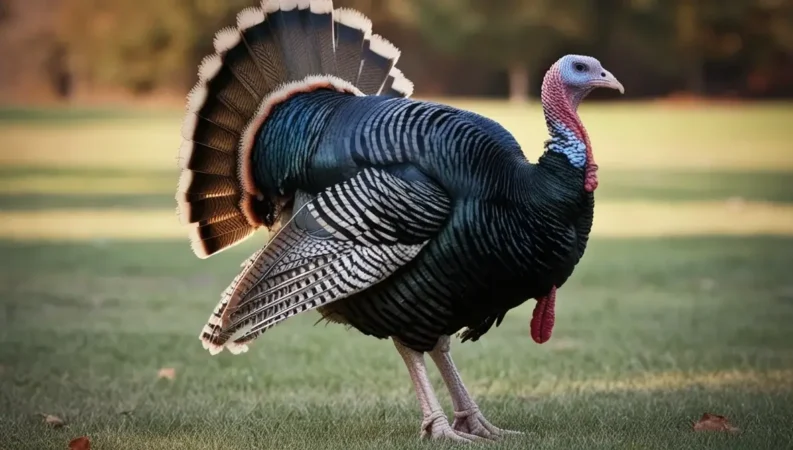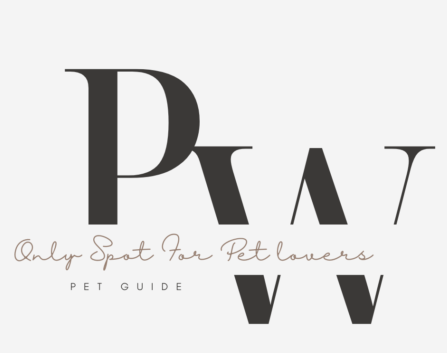
You must be wondering, can dogs eat turkey necks or not? I used to think it was too risky, fearing choking or digestive issues. However, during a visit to my friend Emily’s house, I saw her Labrador Retrievers happily gnawing on raw turkey necks. Emily assured me they were safe and great for dental health.
Curious, I decided to try it with my dog, Buddy. I nervously placed a raw turkey neck in his bowl, and to my surprise, Buddy loved it! He chewed it thoroughly without any issues, and over the next few days, his teeth looked cleaner, and he was more excited during mealtime. That experience convinced me—dogs can indeed enjoy turkey necks safely, and Buddy had found his new favorite treat.
What is Turkey Neck?
Turkey neck is a part of the bird that people often overlook, but it can be really tasty when cooked right. It’s a neck bone with tender, flavorful meat around it. It’s most popular in Southern American and Cajun cooking. These regions are known for using every part of the animal, so nothing goes to waste. Turkey necks are used in hearty, comforting dishes that remind people of family gatherings and old traditions, full of flavor and love.
You can get turkey necks for your dog by clicking the link below or the image below:
Turkey necks are very versatile and can be used to make many delicious dishes that warm the heart. Some popular dishes include
- Braised turkey necks, which are slow-cooked until the meat is very tender and flavorful.
- Turkey neck soup, which is rich and hearty, like a warm hug on a cold day.
- They can also be found in flavorful stews that remind you of grandma’s kitchen.
- For those who like a bit of spice, smoked turkey necks can be a tasty treat, bringing back memories of summer barbecues.
No matter how they are prepared, turkey necks add a unique and savory flavor to many dishes, making every meal feel special and made with care.
Can Dogs Eat Turkey Necks? Are Turkey Necks Safe for Dogs?
Here comes a commonly asked question “Can Dogs Eat Turkey Necks?” or “Are Turkey Necks Safe for Dogs?”. Yes, dogs can eat turkey necks, and they can be safe for dogs when given appropriately. Turkey necks are rich in protein and contain essential nutrients like calcium and phosphorus, which are good for a dog’s health. However, it is necessary to supervise your dog when they are eating a turkey neck to ensure they chew it properly and do not swallow large pieces that could cause choking.
If your dog has a history of pancreatitis, digestive problems, or other health issues, it’s best to consult your veterinarian before introducing turkey necks or any new food into their diet.
Benefits of Feeding Turkey Necks to Dogs
When coming to benefits of feeding turkey necks to dogs, we can’t neglect its nutritional value which gives it edge over other meats and the health advantages it offers to our canine fellow. Let’s have a look on them:
Nutritional Value
Here are the nutrients in turkey neck along with nutritional benefits of feeding turkey necks to dogs.
- Protein: It supports a dog’s immune system, helps in maintaining a healthy coat and skin, and provides the energy necessary for daily activities.
- Calcium: It aids in proper bone development, especially in growing puppies, and helps prevent conditions like osteoporosis in older dogs.
- Phosphorous: It supports the formation and maintenance of strong bones and teeth and plays a role in the body’s energy production and storage.
- Glucosamine and Chondroitin: They can help to support joint health, reduce inflammation, and improve mobility, particularly in older dogs or those with arthritis.
- Omega-3 and Omega-6 Fatty Acids: They promote a healthy coat and skin, support brain function, and reduce inflammation in the body.
- B Vitamins (including B6 and B12): They support red blood cell formation, enhance brain function, and help convert food into energy.
- Collagen: It supports the health of skin, joints, tendons, and ligaments, contributing to overall mobility and flexibility.
- Magnesium: t helps with muscle relaxation and contraction, supports a healthy heart, and aids in the production of cellular energy.
- Iron: t helps with muscle relaxation and contraction, supports a healthy heart, and aids in the production of cellular energy.
Dental Benefits
Turkey necks can significantly improve the dental health of dogs. Here are dental benefits of feeding turkey necks to dogs.
- Natural Chewing Action: As dogs chew on the bones, the abrasive texture helps to scrape off plaque and tartar from their teeth, reducing the risk of dental diseases like periodontal disease and gingivitis.
- Stimulates Saliva Production: Saliva contains enzymes that help break down food particles and wash away bacteria, keeping the mouth cleaner and reducing bad breath.
- Promotes Healthy Gums: Regular chewing on turkey necks helps to strengthen and stimulate the gums, promoting better circulation and overall gum health. This can help prevent gum diseases and keep the gums firm and healthy.
- Prevents Tooth Decay: By preventing the accumulation of plaque and tartar, turkey necks can help prevent tooth decay and other dental problems.
Mental Benefits
Turkey necks can offer several mental benefits to dogs, contributing to their overall well-being and happiness. Here are mental benefits of feeding turkey necks to dogs.
- Mental Stimulation: The act of chewing engages a dog’s mind, keeping them occupied and preventing boredom. This mental stimulation is important for their cognitive health, as it keeps their brain active and helps reduce the risk of behavioral problems that can arise from boredom, such as excessive barking or destructive chewing.
- Stress Relief: The repetitive action of gnawing and chewing can help calm anxious or nervous dogs.
- Sense of Accomplishment: Dogs gain satisfaction and confidence from completing tasks. Chewing through a turkey neck can provide a sense of accomplishment and boost their self-esteem, making them feel more content and happier.
- Bonding Time: Giving your dog a turkey neck as a treat can be a special moment that strengthens your bond. It shows your dog that you care about their well-being, which can improve your relationship and trust with them.
Can Dogs Eat Turkey Necks with Bones Still on Them?
Yes, dogs can eat turkey necks with bones still on them, but it’s important to ensure they are given raw. Raw turkey necks are generally safe for dogs because the bones are softer and less likely to splinter compared to cooked bones.

However, there are some precautions to consider when feeding dogs turkey necks with bones. Always supervise your dog while they are chewing to prevent choking hazards or swallowing large pieces that could cause blockages. Ensure the turkey neck is appropriate for your dog’s size; smaller dogs should have smaller bones, while larger dogs can handle bigger ones. If your dog has any history of dental issues or digestive problems, consult your veterinarian before introducing turkey necks into their diet. By following these guidelines, you can safely provide your dog with a nutritious and enjoyable treat.
Potential Risks of Feeding Turkey Bones to Dogs
| SR.NO | POTENTIAL RISKS | DESCRIPTION |
| 1. | CHOKING HAZARD | Cooked turkey bones can splinter into sharp fragments that may lodge in a dog’s throat. |
| 2. | GASTROINTESTINAL OBSTRUCTION | Bone fragments can cause blockages in the digestive tract, leading to discomfort or worse. |
| 3. | MOUTH OR THROAT INJURY | Sharp bone fragments can cause cuts or punctures in the mouth, throat, or gastrointestinal tract. |
| 4 | CONSTIPATION | Bone pieces that are swallowed whole can lead to constipation or even rectal bleeding. |
| 5. | DENTAL DAMAGE | Hard bones can break teeth or wear down enamel, requiring veterinary dental care. |
| 6. | NUTRITIONAL IMBALANCE | Excessive consumption of bones can upset the balance of a dog’s diet, leading to deficiencies. |
Can Dogs Eat Raw Turkey Necks?
Yes, dogs can eat raw turkey necks, and it is generally safer to feed them raw rather than cooked. Raw turkey necks are softer and less likely to splinter compared to cooked bones, reducing the risk of choking or causing internal injuries. Feeding raw turkey necks also preserves more of the natural nutrients and enzymes beneficial to a dog’s health, such as protein, calcium, and phosphorus. Additionally, chewing on raw bones helps clean teeth and gums, promoting better dental hygiene.
Vet Suggestions on Feeding Turkey Necks to Dogs
Experienced vets generally agree that turkey necks can be a healthy treat for dogs, but there are some important things to keep in mind:
- Raw only: Never feed your dog cooked turkey necks. Cooking makes the bones brittle and prone to splintering, which can cause choking or internal injuries. Raw turkey necks are soft and flexible, posing less risk.
- Supervision: Always supervise your dog when they are chewing on a turkey neck. This allows you to intervene if they try to swallow large pieces or choke.
- Appropriate size: The turkey neck should be big enough for your dog to chew on without breaking it into pieces that could be swallowed whole. Large dogs can handle whole necks, while smaller dogs might need them chopped up.
- Dental health: Be cautious giving turkey necks to dogs with weak teeth or dental problems, as the bones could damage their teeth.
Overall, vets seem to view turkey necks as a positive addition to a dog’s diet in moderation, but emphasize safe feeding practices. If you’re unsure about giving your dog turkey necks, it’s always best to consult with your veterinarian first.
How to Prepare Turkey Necks for Dogs?
Preparing turkey necks for dogs involves several steps to ensure they are safe and beneficial for your pet. Here is how to prepare Turkey necks for dogs.
- Purchase Raw Turkey Necks: Buy raw turkey necks from a trusted source, ensuring they are fresh and suitable for your dog’s size.
- Cut into Appropriate Sizes: Depending on your dog’s size and chewing ability, you may need to cut the turkey necks into smaller pieces. This helps prevent choking and makes it easier for your dog to chew.
- Supervise While Chewing: Always supervise your dog while they chew on turkey necks to ensure they are chewing properly and safely. This also allows you to monitor for any signs of discomfort or potential issues.
- Store Properly: Store any unused portions of the turkey necks in the refrigerator or freezer to maintain freshness and prevent spoilage.
- Consult with Your Veterinarian: Before introducing turkey necks or any new food into your dog’s diet, consult with your veterinarian, especially if your dog has any health issues or dietary restrictions.
- Feed Appropriately: Offer turkey necks as an occasional treat or part of a balanced diet. Avoid overfeeding or relying solely on turkey necks as a primary food source.
By following these steps, you can safely prepare and feed turkey necks to your dog, providing them with a nutritious and enjoyable treat that supports their dental health and overall well-being.
What to Consider While Feeding Turkey Necks to Dogs?
When feeding turkey necks to dogs, several important factors should be considered to ensure their safety and health:
- Raw vs. Cooked: It is safer to feed raw turkey necks rather than cooked ones. Cooked bones can splinter easily, posing a choking hazard or causing internal injuries.
- Supervision: Always supervise your dog while they chew on turkey necks to prevent choking and monitor their chewing habits. This is especially important for dogs who gulp their food quickly.
- Size Appropriateness: Choose turkey necks that are appropriate for your dog’s size and chewing ability. Larger dogs can handle larger bones, while smaller dogs may need smaller pieces to avoid choking.
- Health Considerations: If your dog has dental issues, gastrointestinal sensitivities, or any other health conditions, consult with your veterinarian before introducing turkey necks into their diet.
- Frequency: Turkey necks should be given as an occasional treat rather than a regular part of their diet. Overfeeding can lead to nutritional imbalances or digestive issues.
- Storage: Store raw turkey necks properly in the refrigerator or freezer to maintain freshness and prevent contamination.
- Quality: Purchase turkey necks from reputable sources to ensure they are fresh and free from additives or preservatives.
- Transition: Introduce turkey necks gradually into your dog’s diet to monitor for any allergic reactions or digestive upset.
By considering these factors and following appropriate guidelines, you can safely incorporate turkey necks into your dog’s diet as a nutritious and enjoyable treat.
What Other Parts of Turkey Can Dogs Eat Safely?
In addition to turkey necks, there are several other parts of a turkey that dogs can eat safely when prepared properly:
- Turkey Breast: Lean and low in fat, turkey breast is a good source of protein for dogs. It’s best to feed it cooked and without seasoning to avoid any potential digestive issues.
- Turkey Thighs and Legs: These parts are also rich in protein but may be higher in fat compared to the breast. They should be cooked thoroughly and served without bones.
- Turkey Giblets: Liver, heart, and other giblets from turkey can be nutritious for dogs. They should be cooked thoroughly and served in small amounts to prevent digestive upset due to richness.
- Turkey Liver: Liver is a nutrient-dense organ meat that can be beneficial for dogs in moderation. It should be cooked to avoid any risk of bacterial contamination.
- Turkey Skin: While dogs can technically eat turkey skin, it is high in fat and can be difficult to digest for some dogs. It’s best to feed turkey skin in small amounts or remove excess fat before serving.
- Turkey Bones (Raw): Raw turkey bones, such as drumsticks or wings, can be safe for dogs to chew on as they are softer and less likely to splinter. However, supervision is crucial to prevent choking or ingestion of large pieces.
- Leftover Turkey Meat: Plain, cooked turkey meat without seasoning or bones can be a healthy treat for dogs, provided it is served in moderation and does not contain any harmful additives.
Alternatives to Turkey Neck for Dogs
There are several alternatives to turkey necks that you can safely feed to dogs:
- Chicken Necks or Wings: Like turkey necks, raw chicken necks or wings can provide similar dental benefits and are often easier to find.
- Bully Sticks or Rawhide Alternatives: These are non-bone options that can satisfy a dog’s need to chew. Ensure they are natural and digestible to avoid digestive issues.
- Vegetables: Some dogs enjoy chewing on raw vegetables like carrots or celery, which can also provide a crunchy texture and some dental benefits.
- Commercial Dental Chews: There are specific dental chews designed for dogs that help clean teeth and freshen breath. Look for products approved by veterinary organizations.
Conclusion
In conclusion, I am convinced that dogs can eat turkey necks safely if given in appropriate quantity. However, it is essential to keep an eye on quantity of turkey necks and check several other factors to make sure it doesn’t pose any health disadvantage to your dog.
Hope so, the above discussion have answered all your queries. You can also locate more related articles at petswhil.com.









1 thought on “Can Dogs Eat Turkey Necks? A Mystery Revealed”